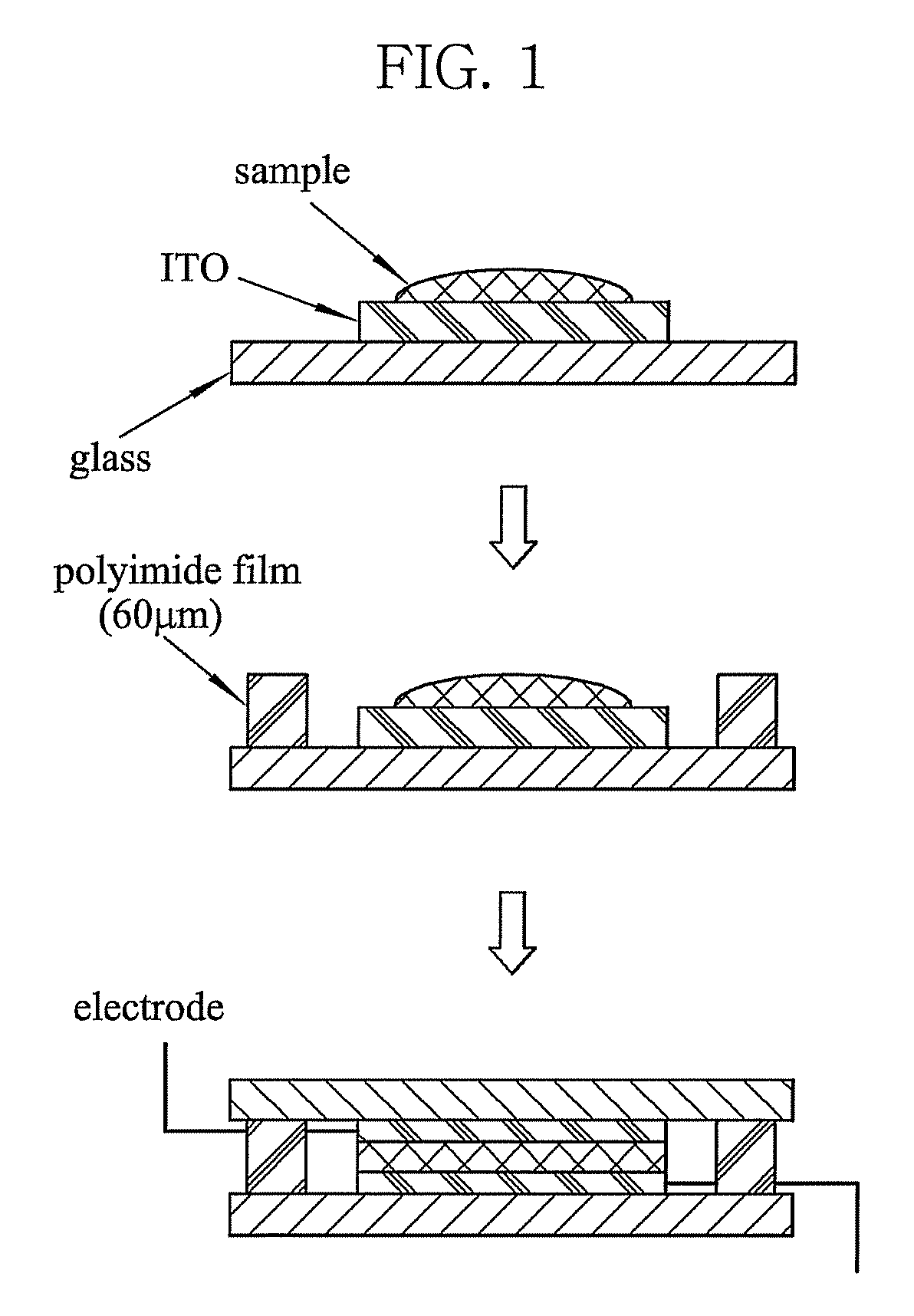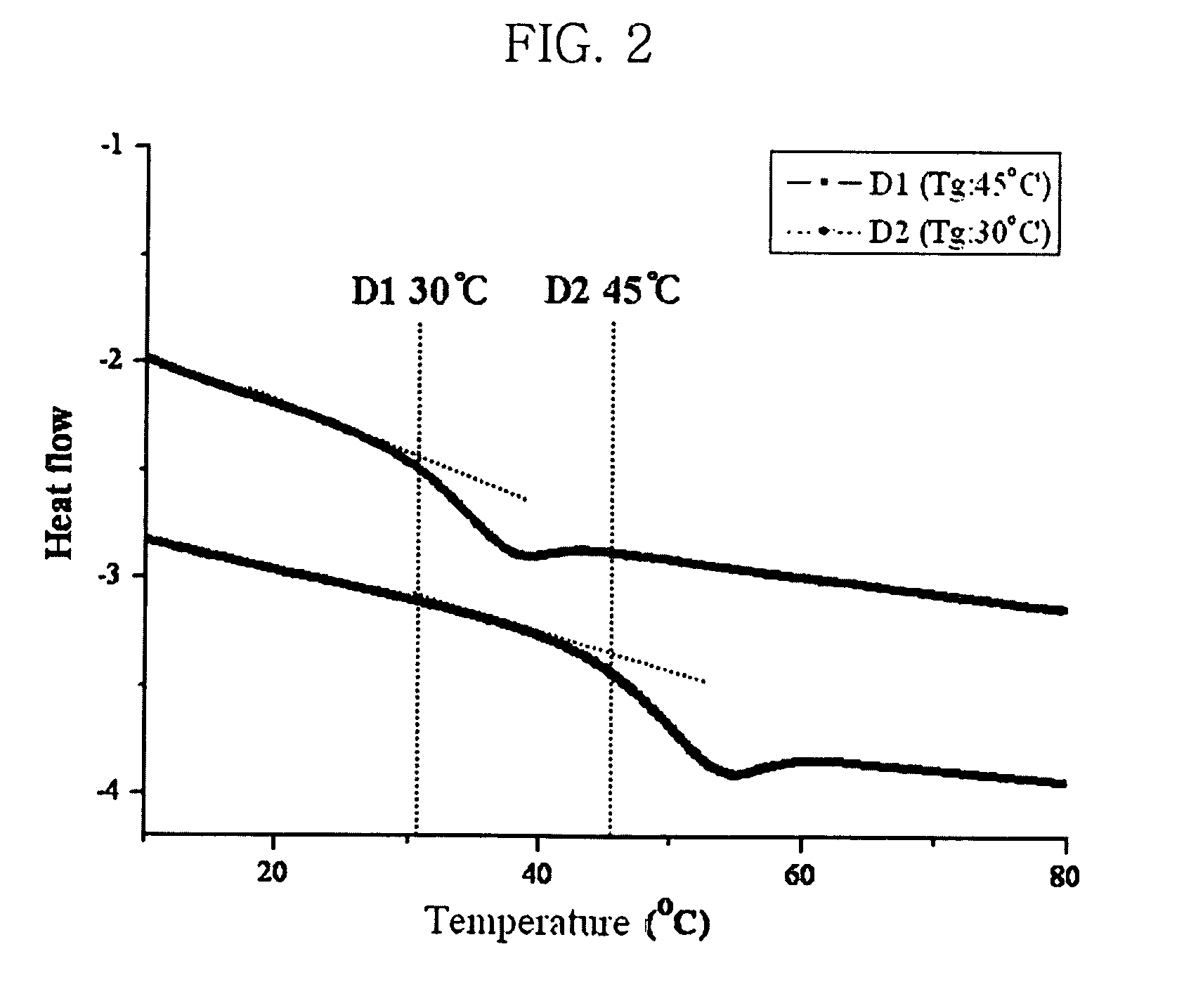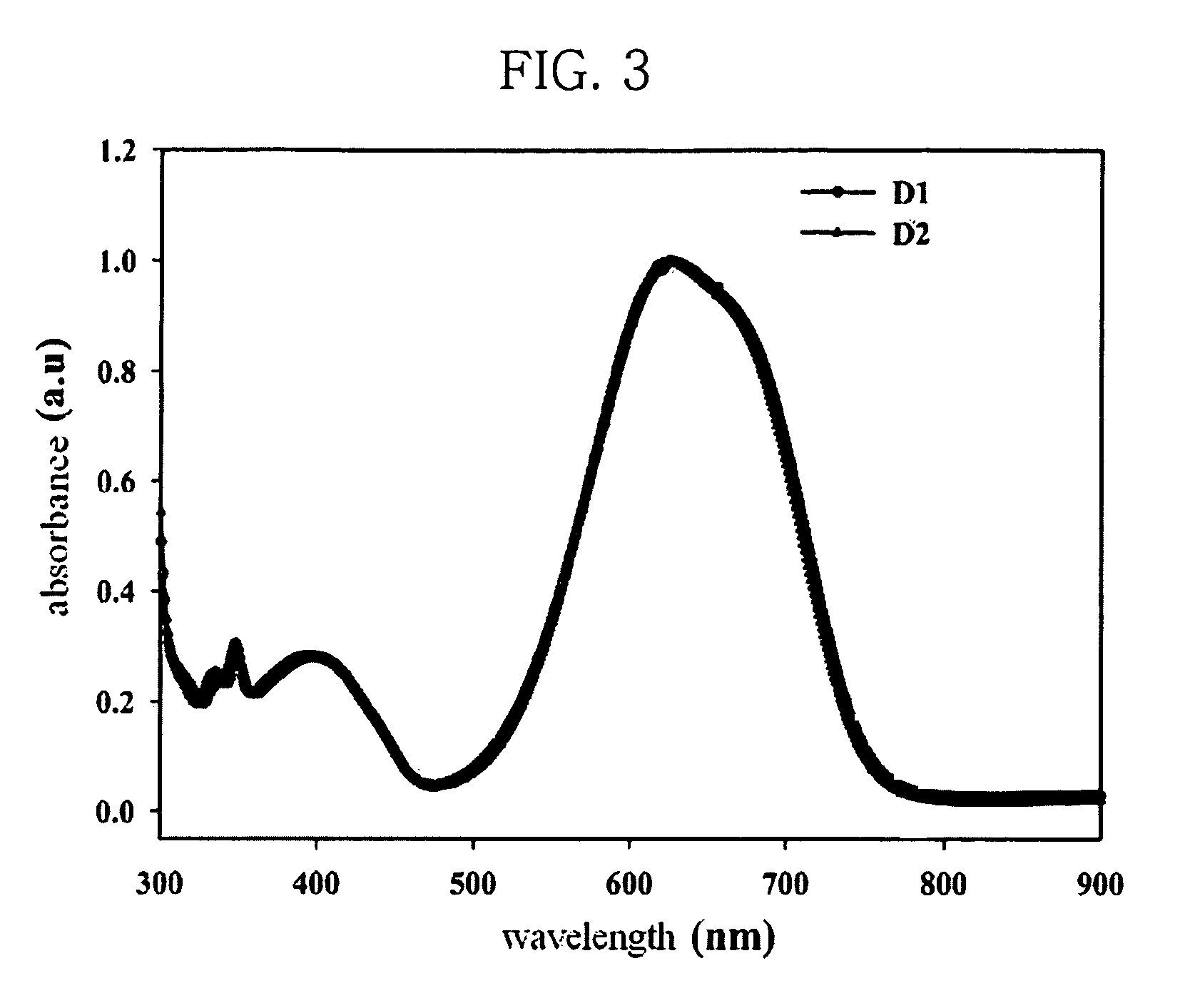Photorefractive dendron compound, photorefractive dendrimer compound, method of preparing the same, photorefractive device using the same, and method of manufacturing the device
a technology of dendron and compound, which is applied in the field of photorefractive dendron compound, can solve the problems of uncommercialized, unsuitable for use as information processing medium, and still organic photorefractve material, and achieves the effects of high response speed, high stability, and superior device stability
- Summary
- Abstract
- Description
- Claims
- Application Information
AI Technical Summary
Benefits of technology
Problems solved by technology
Method used
Image
Examples
example 1
Preparation of 9-(6-(tert-butyldimethylsilyloxy)hexyl)-9H-carbazole-3-carbaldehyde (4)
[0069]9-(6-hydroxyhexyl)-9H-carbazole-3-carbaldehyde (12.0 g, 0.0406 mol) and dichloromethane (100 ml) were loaded into a three-neck flask, stirred, added with tert-butyldimethylsilyl chloride (7.35 g, 0.0487 mol) and imidazole (3.04 g, 0.0447 mol), and allowed to react at room temperature for 24 hours with stirring. The reaction product was transferred into a separate funnel, and was then added with water and ethyl acetate, after which the organic layer was isolated therefrom, dehydrated using sodium sulfate, and then distilled under reduced pressure. Then, the obtained viscous liquid was separated through silica column chromatography, thus obtaining 10.8 g of a liquid as the title compound.
[0070]The NMR data of the above material was as follows:
[0071]1H NMR (400 MHz, CDCl3, rt): δ (ppm) 0.01 (s, 6H, CH3Si) 0.87 (s, 9H, CH3), 1.36˜1.38 (m, 4H, CH2), 1.44˜1.50 (m, 2H, CH2), 1.82˜1.90 (m, 2H, CH2), ...
example 2
Preparation of (9-(6-(tert-butyldimethylsilyloxy)hexyl)-9H-carbazol-3-yl)methanol (5)
[0072]In a three-neck flask, 9-(6-hydroxyhexyl)-9H-carbazole-3-carbaldehyde (12.0 g, 0.0406 mol), dichloromethane (100 ml), and sodium borohydride (0.55 g, 0.0147 mol) were dissolved in 100 ml of methanol, after which the reaction solution was allowed to react at 60° C. for 3 hours with stirring. The reaction product was transferred into a separate funnel, and was then added with water and ethyl acetate, after which the organic layer was isolated therefrom, dehydrated using sodium sulfate, and then distilled under reduced pressure. Thereafter, the obtained viscous liquid was separated through silica column chromatography, thus obtaining 9.0 g of a yellowish transparent liquid material.
[0073]The NMR data of the above material was as follows.
[0074]1H NMR (400 MHz, CDCl3, rt): δ (ppm) 0.06 (s, 9H, CH3) 0.92 (s, 9H, CH3Si), 1.36˜1.38 (m, 4H, CH2), 1.46˜1.52 (m, 2H, CH2), 1.82˜1.89 (m, 2H, CH2), 2.14 (s,...
example 3
Preparation of 6-((2-ethylhexyl)(phenyl)amino)hexyl acetate (6)
[0075]6-((2-ethylhexyl)(phenyl)amino)hexan-1-ol (8.0 g, 0.023 mol) and dichloromethane (100 ml) were loaded into a three-neck flask, stirred, and added with acetic anhydride (2.8 g, 0.028 mol) and pyridine (3.0 g, 0.038 mol). The mixture was allowed to react at 40° C. for 12 hours with stirring. The reaction product was transferred into a separate funnel, and was then added with water and dichloromethane, after which the organic layer was isolated therefrom, dehydrated using sodium sulfate, and then distilled under reduced pressure. Subsequently, the obtained viscous liquid was separated through silica column chromatography, thus obtaining 7.5 g of a yellowish transparent liquid.
[0076]The NMR data of the above material was as follows.
[0077]1H NMR (300 MHz, CDCl3, rt): δ (ppm) 0.89 (t, J=7.5 Hz, 6H, CH3), 1.28 (m, J=4.2 Hz, 12H, CH2), 1.56 (m, J=7.5 Hz, 4H, CH2), 1.69 (m, J=4.2 Hz, 1H, CH), 2.04 (s, 3H, CH3C), 3.14 (d, J=...
PUM
| Property | Measurement | Unit |
|---|---|---|
| wavelengths | aaaaa | aaaaa |
| glass transition temperatures | aaaaa | aaaaa |
| glass transition temperatures | aaaaa | aaaaa |
Abstract
Description
Claims
Application Information
 Login to View More
Login to View More - R&D
- Intellectual Property
- Life Sciences
- Materials
- Tech Scout
- Unparalleled Data Quality
- Higher Quality Content
- 60% Fewer Hallucinations
Browse by: Latest US Patents, China's latest patents, Technical Efficacy Thesaurus, Application Domain, Technology Topic, Popular Technical Reports.
© 2025 PatSnap. All rights reserved.Legal|Privacy policy|Modern Slavery Act Transparency Statement|Sitemap|About US| Contact US: help@patsnap.com



